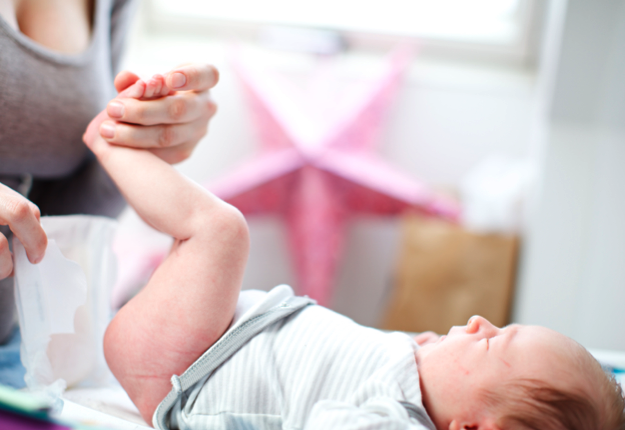Nappy rash describes a variety of skin conditions that can appear in the nappy area.
The discomfort level for baby can range from mild to severe.
How to recognise Nappy Rash
Nappy rash appears as inflamed, red and blotchy skin on the skin covered by nappies. There may be blistering and occasionally ulcers. The rash may sometimes spread to the tummy and bottom.
It’s sore, can hurt when bub passes urine, and can lead to unsettled and unhappy babies.
What causes nappy rash?
A major cause is when a baby’s skin is exposed to wet or dirty nappies (the combination of heat, damp and friction in a nappy), but it can also be triggered by medications, new foods and chemical irritants, such as unnatural baby lotions, detergents and nappy soaking solutions.
Babies who suffer eczema or cradle cap are prone to nappy rash, and babies who have family members who suffer dermatitis may be more likely to suffer from this skin irritation.
Prevention and Treatment
- Frequent nappy changes can help, although the problem can sometimes continue, no matter how often a nappy is changed.
- Let baby have some nappy free time each day (lie them on a soft towel).
- Avoid chemical based products.
- Switch to cloth nappies for the duration of the rash, and ensure cotton nappies are thoroughly washed to remove all traces of detergents and chemicals.
See your health care professional if the rash persists for more than a week as there may be an underlying skin condition such as thrush, dermatitis or psoriasis.
The Little Innoscents Massage Oil can be used to treat and prevent both dermatitis and psoriasis.






















10:41 pm
1:44 pm
2:42 pm
6:33 am
9:16 am
7:05 am
6:34 pm
4:00 pm
4:31 pm
8:35 am
-

-
-
june11 replied
- 13 Nov 2014 , 2:19 pm
Reply12:46 am
2:02 pm
12:04 am
1:19 pm
2:59 pm
12:50 pm
9:23 pm
3:25 pm
2:17 pm
11:00 pm
- 1
- 2
- »
Post a commentTo post a review/comment please join us or login so we can allocate your points.